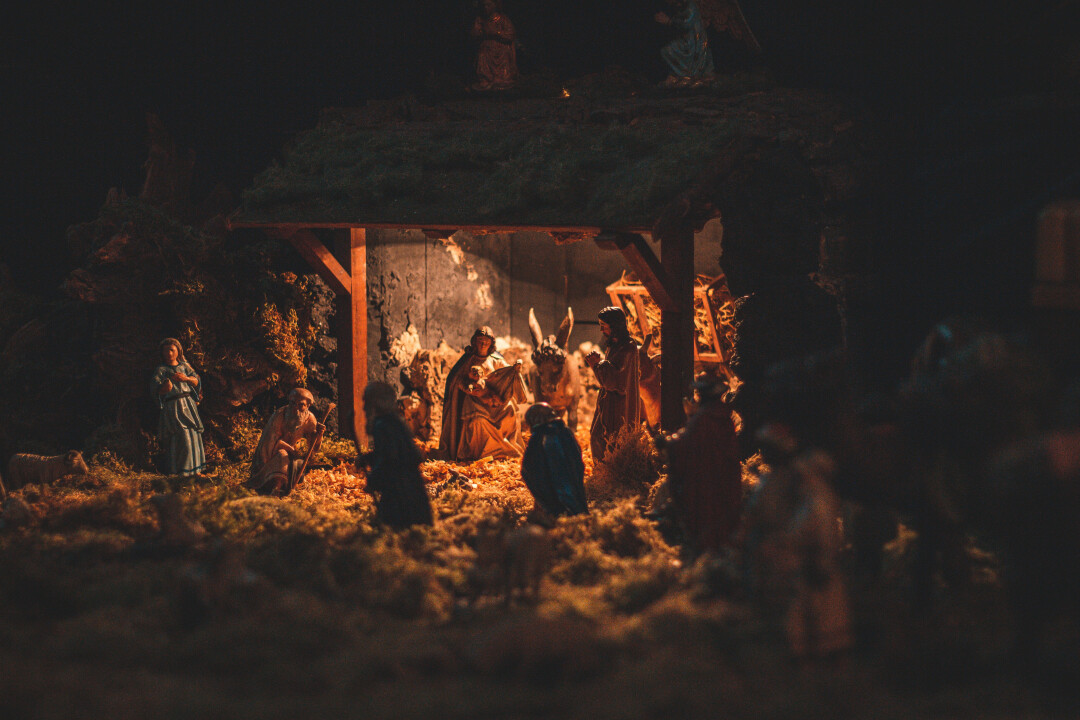
by Jeff Lucas on December 19, 2022
Strange things are said and done when Christmas comes around. Yesterday, I was served a hamburger by a deer.
The management of my local fast food eatery had required their smiling staff to wear large, scarlet antlers festooned with blinking fairy lights; very nice. And for background music, a track from the compilation CD Now that’s what I call music to go mad by warbled:
Christmas is a time for us to be together
Christmas is a time for us to love each other….
The music and the wildlife together conspired to create a warm, ambient atmosphere conducive to the season of goodwill.
I glanced around the restaurant for confirmation that people were indeed loving one another. A stone-faced lady and her hat-wearing husband sat silently at a corner table. There was something vaguely menacing about the way she tore tiny, carnivorous bites out of her burger a la Hannibal Lecter. Occasional frosty glares were exchanged; palpable tension crackled between them like static electricity. And hark, over yonder in the other corner, another chirpy family outing unraveled as a manic infant on Duracells swirled milkshake around his head, gloriously baptizing nearby tut-tutting tables in strawberry blobs.
Suddenly, the gap between the image of Christmas — as it’s supposed to be — and the reality of how it actually is yawned before me like the Grand Canyon. Is that gap part of the reason why some find the whole business of Christmas depressing? Marital tensions, life-draining diseases, and worries about redundancy are pressures that don’t take time off for Christmas, politely disappearing for the cheery season and popping back in after Boxing Day. The idea of a happy-zone magical season can taunt us with its sheer unreality, especially if one is required to share the festivities with distant family members who irritate you into assassination fantasies before the Queen has barely begun her afternoon national chat.
The unreality has spread to the reason for the season itself. I have a few Christmas cards where artists have daubed the traditional Nativity scene in unreal colors, tarting it all up with false, garish glory. A surreally calm Mary, who apparently chose to give birth while dressed from head to foot as a blue nun, glows with soft fluorescence, courtesy of a goldfish bowl-shaped halo. Joseph is usually absent from the scene; perhaps he’s out back trying to straighten out a wonky coffee table he made earlier. And baby Jesus, himself adorned with a junior-sized goldfish bowl, is sitting up already, and appears to be thanking the wise men for coming to his party. All rather good for one who is but thirty minutes old. Cattle peer at the family from neat hay bales that whiff of Chanel Number 5. There is none of the substance — the polite term is the inoffensive cow pat, inoffensive unless your name happens to be Pat — that is usually in abundance when cattle are around. Of course not.
Even the old carol suggests a scene of blatant unreality:
The cattle are lowing, the baby awakes
But little Lord Jesus no crying he makes.
Oh really? Why wouldn’t Jesus cry then? Perhaps he’d alert all and sundry to the fact that he needed his swaddling clothes changing with a raised hand of blessing rather than a heartfelt scream, Him being the Son of God and all.
The irony is that Christmas is about the story of the extraordinary God kissing a very ordinary world. The true splendor of the Nativity is the notion of a God landing without much fanfare or fuss, welcomed by a few night workers and traveling mystics. The King shows up in squalor. Like a heavenly bungee jumper, He shunned the pristine order of heaven to dive down into our sweaty, confused, fog-bound world, and announced a new order of living. Christmas says that we no longer need to haul ourselves heavenward by our own bootlaces, but that God comes to rescue those who whisper an invitation.
Christmas: it’s about the God who is willing to close the gap.




